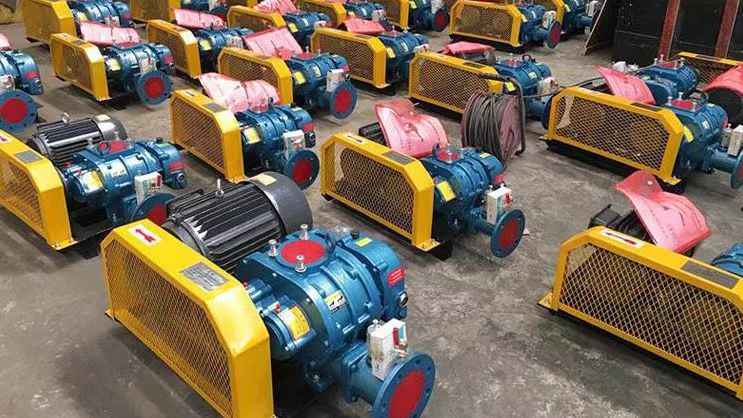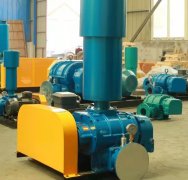**Roots Supercharger Explanation**
Roots mechanical supercharging is a forced induction technology mainly used in internal combustion engines (such as automotive and marine engines) to increase intake pressure and power output. The core component is the Roots Blower, which uses two meshing rotors to rotate at high speed and force air into the engine combustion chamber.
---

**1、 The working principle of Roots mechanical supercharging**
1. * * Basic Structure**
-* * Dual rotor design * *: Typically a two blade or three blade helical rotor that maintains non-contact meshing through synchronous gears.
-Shell: Made of aluminum alloy or cast iron, with precision machining inside to ensure airtightness.
-Bypass Valve: Some models are equipped with it to regulate boost pressure.
2. * * Workflow**
-* * Inhalation stage * *: When the rotor rotates, the intake volume increases and external air is sucked in.
-Closed conveying: Air is enclosed by the chamber formed by the rotor and the housing and pushed towards the outlet.
-Forced compression: Air enters the engine intake manifold at a pressure higher than atmospheric pressure.
3. * * Key Features**
-* * No internal compression * *: Unlike turbocharging, Roots superchargers do not compress air themselves, and the boost pressure is determined by the engine's intake resistance.
-* * Linear response * *: The speed is proportional to the intake volume, without turbo lag.
---
**2、 Roots turbocharging vs turbocharging vs twin-screw turbocharging**
|* * Comparison item * * | * * Roots turbocharging * * | * * Turbocharging * * | * * Twin screw turbocharging * *|
|------------------|-------------------------------|-----------------------------|-----------------------------|
|* * Power source * * | Engine crankshaft belt drive | Exhaust gas driven turbine | Engine crankshaft belt drive|
|* * Compression method * * | No internal compression (volumetric conveying) | Centrifugal compression | Internal compression (screw engagement compression)|
|* * Response speed * * | Instant response (no lag) | Presence of turbo lag | Faster response|
|* * Efficiency * * | Low (high energy loss at high speeds) | High (utilizing exhaust energy) | High (reducing energy loss through internal compression)|
|* * Noise * * | High frequency airflow sound | Small | Medium|
|* * Typical Applications * * | American muscle cars (such as Dodge Hellcat) | Mainstream family performance cars (such as Golf GTI) | High performance modifications (such as Ford RS)|
---
**3、 Advantages and disadvantages of Roots turbocharging**
**Advantages**
1. * * Instantaneous Boost**
-Starting from low RPM, it provides boost pressure, suitable for linear power output of large displacement engines.
2. * * Simple structure**
-No complex cooling system (turbocharger requires intercooler), low maintenance cost.
3. High temperature resistance**
-Without the influence of high-temperature exhaust gas from the turbine, it has high reliability.
**Disadvantages**
1. * * Low energy efficiency**
-Directly consuming engine power (about 15-30) results in poor fuel economy.
2. * * Limited high-speed performance**
-At high speeds, there is severe air friction and heating, resulting in a decrease in boosting efficiency.
3. * * Obvious noise**
-High frequency whistling is generated by rotor meshing and airflow pulsation (some models require the installation of mufflers).
---
**4、 Typical application vehicle models**
1. * * Classic car models**
-Dodge Challenger Hellcat (2.4L supercharged V8707 horsepower)
-Mercedes AMG C63 (early 6.2L V8 supercharged version)
2. * * Modification field**
-Commonly used for American muscle cars and drag racing vehicles.
---
**5、 Maintenance and common problems**
**1. Daily maintenance**
-Lubrication inspection: Synchronous gears require regular replacement of specialized lubricating grease.
-Belt tension: If the drive belt is too loose, it will cause slippage, and if it is too tight, it will increase the bearing load.
-* * Clean the intake * *: prevent dust from entering the rotor gap and causing wear.
**2. Common faults**
-* * Rotor wear * *: After long-term high-speed operation, the clearance increases and needs to be replaced or adjusted.
-Overheating: Continuous high load operation may cause deformation of the shell (it is recommended to install an intercooler).
-Abnormal noise: Gear damage or bearing aging require immediate maintenance.
---
**6、 Suggestions for retrofitting Roots turbocharging**
1. * * Match engine displacement**
-Small displacement engines (<2.0L) are not suitable for Roots turbocharging (low efficiency).
2. Boost value control**
-Usually maintained at 0.5-1.0 bar, excessive pressure can cause detonation (ECU fuel injection needs to be adjusted).
3. * * Cooling optimization**
-Install an intercooler to reduce the intake temperature.
---
**Summary**
-Roots turbocharging is suitable for performance cars or modified cars that pursue low torque and instant response.
-Not suitable for models that prioritize fuel economy or high-speed power.
-* * Key Tip * *: During modification, it is necessary to upgrade the fuel system and calibrate the ECU synchronously to avoid engine damage.
If you need a specific car model's turbocharging plan or troubleshooting, you can provide engine parameters for further analysis!



